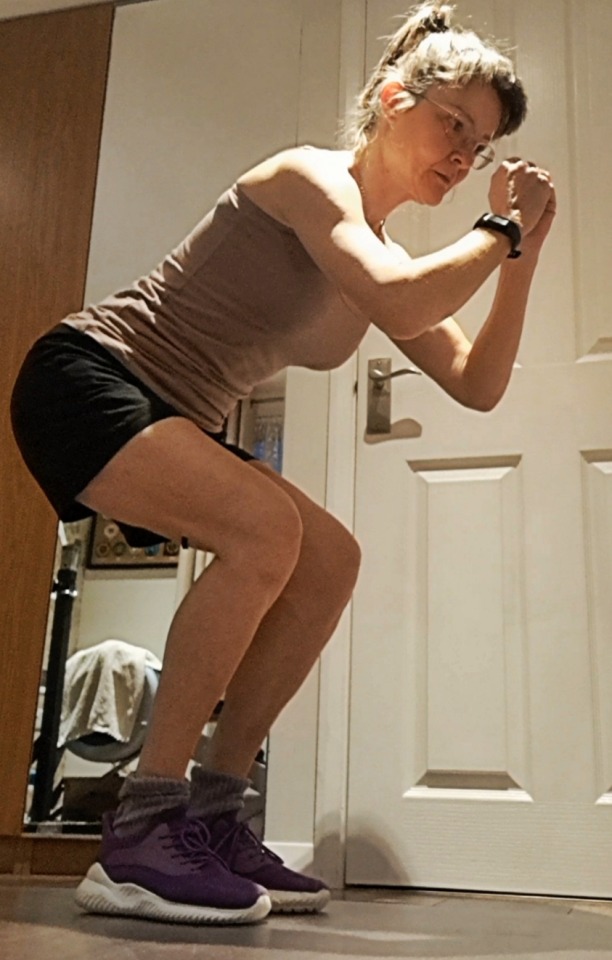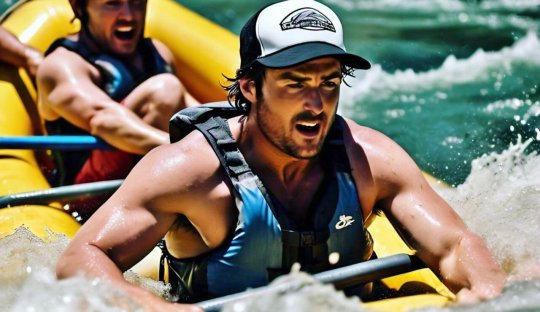#Cardiovascular exercise
Explore tagged Tumblr posts
Text
Cardio vs Weight Training: What’s Best For A Healthy Heart? - News18
Last Updated:May 09, 2025, 15:42 IST To prevent heart diseases, both cardio and weight training are essential. A balanced weekly routine of both helps maintain long-term heart health and overall well-being Cardio or weight training: What should be your focus for a healthier heart? (News18 Hindi) In today’s fast-paced life, the burden of diseases is increasing, with heart-related conditions…

View On WordPress
#aerobic workout#cardio benefits#cardiovascular exercise#heart disease prevention#heart health#strength training#weight training#weight training benefits
0 notes
Text

Dungeons and Degenerate Gamblers
Card - Cardiovascular Exercise
0 notes
Text
This article explains why people with Post Covid Syndrome have issues like Post Exertion Malaise and have no energy.

#covid#sars cov 2#long covid#pcs#metabolichealth#metabolic disturbance#exercise#cardiovascular exercise
0 notes
Text
Embracing Fitness After Forty: Tips for a Healthy and Active Lifestyle
Turning forty is a milestone worth celebrating, and it’s also a perfect time to prioritize your health and fitness. While staying fit over forty might seem challenging, it’s entirely achievable with the right approach and mindset. In this article, we’ll explore practical tips and strategies for maintaining a healthy and active lifestyle well into your forties and beyond. 1. Set Realistic…
0 notes
Text
youtube
Exercise Can Reverse Aging! - Brand New Studies
Brand New Studies Shows Exercise Can Reverse Aging and Keep Us Young. What Kind of Exercise? How Often Do You Need to Exercise? I Will Talk About All That and More. See Benefits and Side Effects. See Scientific References Below. Watch Short Video. Dr. Paul Haider – Award Winning Master Herbalist and Health and Wellness Instructor for 33 Years. See Science References Below, Watch a Very Short Video.
#Exercise Can Reverse Aging! - Brand New Studies#Exercise#Aging#Anti-Aging#Stay Young#Youth#Cardiovascular Exercise#Strength Training#Weight Training#Walking#Swimming#Biking#Running#Daily Exercise#Better Skin#Better Muscles#Better Brain#Cognitive Decline#Staying Young#Paul Haider#Master Herbalist#Health Natural Remedies#Wellness#Nutrition#Instructor#Herbs#Immunity#Mental Health#Healing#Gut Health
0 notes
Text

Health Benefits
Discover the numerous health benefits of rafting with Advantage Grand Canyon, from improved cardiovascular fitness to reduced stress levels!
#mental health benefits#mental health#whitewater rafting#outdoor adventure#cardiovascular fitness#holistic wellness#strength building#flexibility development#weight control#river rafting offers#health benefits#heart health#cardiovascular exercise#outdoor rafting#contact advantage grand canyon#rafting trips#grand canyon rafting trips#rafting trip#rafting Adventure#grand canyon rafting#advantage grand canyon#AdvantageGrandCanyon#advantagegrandcanyon.com
0 notes
Text
Step Into Wellness: The Joys of Walking and Running
What is your favorite form of physical exercise? Walking and running are two of the most accessible and beneficial forms of physical exercise. Whether you’re strolling through a park, jogging along a scenic trail, or simply taking a brisk walk around your neighborhood, these activities offer a myriad of advantages for both your physical and mental well-being.Walking, in particular, is a…
View On WordPress
0 notes
Text
No ripples
#swimmer#swimming#swimming pool#self propulsion#water#athlete#smooth sailing#diving#under water#exercise#workout#fitness#working out#cardiovascular
7 notes
·
View notes
Text

At 93, he’s as fit as a 40-year-old. His body offers lessons on aging.
The human body maintains the ability to adapt to exercise at any age, showing that it’s never too late to start a fitness program
By Gretchen Reynolds
For lessons on how to age well, we could do worse than turn to Richard Morgan.
At 93, the Irishman is a four-time world champion in indoor rowing, with the aerobic engine of a healthy 30- or 40-year-old and the body-fat percentage of a whippet. He’s also the subject of a new case study, published last month in the Journal of Applied Physiology, that looked at his training, diet and physiology.
Live well every day with tips and guidance on food, fitness and mental health, delivered to your inbox every Thursday.
Its results suggest that, in many ways, he’s an exemplar of fit, healthy aging — a nonagenarian with the heart, muscles and lungs of someone less than half his age. But in other ways, he’s ordinary: a onetime baker and battery maker with creaky knees who didn’t take up regular exercise until he was in his 70s and who still trains mostly in his backyard shed.
Even though his fitness routine began later in life, he has now rowed the equivalent of almost 10 times around the globe and has won four world championships. So what, the researchers wondered, did his late-life exercise do for his aging body?
Lessons on aging from active older people
“We need to look at very active older people if we want to understand aging,” said Bas Van Hooren, a doctoral researcher at Maastricht University in the Netherlands and one of the study’s authors.
Many questions remain unanswered about the biology of aging, and whether the physical slowing and declines in muscle mass that typically occur as we grow older are normal and inevitable or perhaps due, at least in part, to a lack of exercise.
Start the year fresh
If some people stay strong and fit deep into their golden years, the implication is that many of the rest of us might be able to as well, he said.
Helpfully, his colleague Lorcan Daly, an assistant lecturer in exercise science at the Technological University of the Shannon in Ireland, was quite familiar with an example of successful aging. His grandfather is Morgan, the 2022 indoor-rowing world champion in the lightweight, 90-to-94 age group.
What made Morgan especially interesting to the researchers was that he hadn’t begun sports or exercise training until he was 73. Retired and somewhat at loose ends then, he’d attended a rowing practice with one of his other grandsons, a competitive collegiate rower. The coach invited him to use one of the machines.
“He never looked back,” Daly said.
Highest heart rate on record
They invited Morgan, who was 92 at the time, to the physiology lab at the University of Limerick in Ireland to learn more, measuring his height, weight and body composition and gathering details about his diet. They also checked his metabolism and heart and lung function.
They then asked him to get on a rowing machine and race a simulated 2,000-meter time trial while they monitored his heart, lungs and muscles.
“It was one of the most inspiring days I’ve ever spent in the lab,” said Philip Jakeman, a professor of healthy aging, physical performance and nutrition at the University of Limerick and the study’s senior author.
Morgan proved to be a nonagenarian powerhouse, his sinewy 165 pounds composed of about 80 percent muscle and barely 15 percent fat, a body composition that would be considered healthy for a man decades younger.
During the time trial, his heart rate peaked at 153 beats per minute, well above the expected maximum heart rate for his age and among the highest peaks ever recorded for someone in their 90s, the researchers believe, signaling a very strong heart.
His heart rate also headed toward this peak very quickly, meaning his heart was able to rapidly supply his working muscles with oxygen and fuel. These “oxygen uptake kinetics,” a key indicator of cardiovascular health, proved comparable to those of a typical, healthy 30- or 40-year-old, Daly said.
Exercising 40 minutes a day
Perhaps most impressive, he developed this fitness with a simple, relatively abbreviated exercise routine, the researchers noted.
Consistency: Every week, he rows about 30 kilometers (about 18.5 miles), averaging around 40 minutes a day.
A mix of easy, moderate and intense training: About 70 percent of these workouts are easy, with Morgan hardly laboring. Another 20 percent are at a difficult but tolerable pace, and the final 10 at an all-out, barely sustainable intensity.
Weight training: Two or three times a week, he also weight-trains, using adjustable dumbbells to complete about three sets of lunges and curls, repeating each move until his muscles are too tired to continue.
A high-protein diet: He eats plenty of protein, his daily consumption regularly exceeding the usual dietary recommendation of about 60 grams of protein for someone of his weight.
How exercise changes how we age
“This is an interesting case study that sheds light on our understanding of exercise adaptation across the life span,” said Scott Trappe, director of the Human Performance Laboratory at Ball State University in Indiana. He has studied many older athletes but was not involved in the new study.
“We are still learning about starting a late-life exercise program,” he added, “but the evidence is pretty clear that the human body maintains the ability to adapt to exercise at any age.”
In fact, Morgan’s fitness and physical power at 93 suggest that “we don’t have to lose” large amounts of muscle and aerobic capacity as we grow older, Jakeman said. Exercise could help us build and maintain a strong, capable body, whatever our age, he said.
Of course, Morgan probably had some genetic advantages, the scientists point out. Rowing prowess seems to run in the family.
And his race performances in recent years have been slower than they were 15, 10 or even five years ago. Exercise won’t erase the effects of aging. But it may slow our bodies’ losses, Morgan’s example seems to tell us. It may flatten the decline.
It also offers other, less-corporeal rewards. “There is a certain pleasure in achieving a world championship,” Morgan told me through his grandson, with almost comic self-effacement.
“I started from nowhere,” he said, “and I suddenly realized there was a lot of pleasure in doing this.”
15 notes
·
View notes
Text
Alex Bidetxea - Cómo el ciclismo puede ayudar a prevenir enfermedades crónicas 🚴♂️
El ciclismo es mucho más que un medio de transporte o una actividad recreativa. Es una herramienta poderosa para cuidar tu salud y prevenir enfermedades crónicas que afectan a millones de personas en todo el mundo. Incorporar esta práctica regularmente a tu vida puede marcar la diferencia en cómo te sientes hoy y en cómo enfrentarás el futuro.

Cuando pedaleas, tu cuerpo experimenta una serie de beneficios físicos y mentales. Al tratarse de un ejercicio aeróbico de bajo impacto, el ciclismo es apto para personas de todas las edades y niveles de condición física. Además de mejorar tu resistencia y tonificar tus músculos, esta actividad tiene un impacto directo en la prevención de enfermedades graves.
¿Cómo contribuye el ciclismo a tu salud a largo plazo?
Fortalece tu corazón y sistema cardiovascular: Al montar en bicicleta, aumentas tu frecuencia cardíaca y mejoras el flujo sanguíneo, reduciendo el riesgo de enfermedades cardíacas, hipertensión y accidentes cerebrovasculares.
Ayuda a controlar el peso corporal: El ciclismo es una excelente forma de quemar calorías y mantener un peso saludable, un factor clave para prevenir condiciones como la obesidad y la diabetes tipo 2.
Regula el azúcar en sangre: Esta actividad mejora la sensibilidad a la insulina, estabilizando los niveles de glucosa y ayudando a prevenir el desarrollo de diabetes.
Protege tus articulaciones: A diferencia de actividades de alto impacto, el ciclismo es amable con las articulaciones, lo que lo hace ideal para personas con problemas como artritis.
Fomenta la salud mental: Reducir el estrés, mejorar el estado de ánimo y combatir la ansiedad son beneficios que también contribuyen a prevenir enfermedades asociadas al estrés crónico.
El impacto a largo plazo
Hacer del ciclismo una parte integral de tu rutina diaria no solo mejora tu calidad de vida hoy, sino que crea una base sólida para un futuro más saludable. Estudios han demostrado que las personas que practican ciclismo regularmente tienen menos probabilidades de desarrollar enfermedades crónicas, además de disfrutar de un bienestar físico y emocional más equilibrado.
Cada vez que subes a la bicicleta, no solo te estás moviendo hacia un destino, sino también hacia una vida más plena y libre de enfermedades. ¡Es hora de pedalear por tu salud! 🚴♂️✨
#alex bidetxea#ciclismo#ciclista#cycling#bikes#bicicleta#rutas ciclistas#exercise#workout#entrenamiento#salud#salud cardiovascular
2 notes
·
View notes
Text








After a lazy day yesterday, I'm back on it this morning.
A good combination of resistance and cardio for my lower body to start my day.
Then the part of my day that I always look forward to - coffee and peanuts as the sun rises.
An hour later, it was out in that wonderful natural light for a muddy, but excellent walk.
Made more excellent with a lovely coffee break towards the end!
#fitspo#fitspiration#fitblr#fitness#healthy living#health and fitness#fit#workout#fiton#suzieb-fit#walking#cardiovascular health#circadian rhythm#natural sunlight#lower body training#lower body exercises#resistance training#caffeine junkie
16 notes
·
View notes
Text
How Slow Jogging Heals the Body
Slow jogging is easy to do. It’s no more taxing to your heart than just walking. Instead of trying hard and running at an intensive pace to the point where you don’t enjoy yourself or your surroundings, you can jog at a relaxed pace and get all the benefits. Give it a shot, even if you’re not 40 yet. 💪 There seems to be an overwhelming belief in fitness today that pushing ourselves to the limit…
#balanced fitness#barefoot running#cardiac rehabilitation#cardio health#cardiovascular health#casual jogging#casual running#diabetes prevention#easy fitness#easy running tips#everyday fitness#evolutionary fitness#exercise#exercise routine#exercise without exhaustion#fat burning#fat burning exercise#fat burning workout#fat loss#fitness#fitness advice#fitness advice channel#fitness after 40#fitness approach#fitness beginners guide#fitness benefits#fitness consistency#fitness culture#fitness for beginners#fitness for busy people
2 notes
·
View notes
Text
Whitewater Rafting

The Benefits Of Rafting For Physical And Mental Health
Rafting is an adventure and a sport that offers an incredibly unique combination of excitement and serenity. Thus, it is also perfect for holistic wellness due to its numerous physical and mental benefits. In addition to adrenaline-filled rapid riding, it strengthens cardiac fitness and muscle tone and promotes a confident mind. Whitewater rafting is all about riding a tide in a full-sized raft with others and enjoying nature and scenery while getting a great workout.
White-Water Rafting Can Strengthen Your Self-Esteem And Develop Your Willpower
Whitewater rafting resembles an outdoor adventure that involves paddling an inflatable boat down a river. Its hallmark is its unpredictable and exciting nature, which may be either smooth, relaxing, or highly entertaining. There are different intensities. Still, paddling in a team and being coordinated is a significant part of rafting since participants must synchronize their paddling and avoid bumps.
Psychologically, whitewater rafting is an effective way to reduce stress because of the soothing influence of water and the natural world. Next time you consider a family trip or a weekend getaway with friends, consider this adrenaline rush while breathing fresh air and enjoying some scenic locations.
Physical Health Benefits
Rafting does not simply live under the reputation of intense adrenaline rush; it also offers substantial health benefits beyond the sporting aspect. It benefits cardiovascular fitness, strength building, flexibility development, and weight control.
Furthermore, river rafting offers low-impact workouts for people from different fitness categories. For many, it is a way to explore nature and improve their day-to-day lives. For example, the natural environments surrounding you help with stress management.
Cardiovascular Fitness
Rafting is considerably beneficial for heart health through its perfect cardiovascular exercise. Paddling through water requires unceasing physical activity and workouts to lift the heart rate and boost blood circulation. This long-term aerobic training remarkably increases heart muscle strength and endurance and lowers blood pressure. Moreover, the strenuous exertion required in maneuvering through rapids stimulates overall cardiovascular fitness, resulting in better health and a stronger cardiovascular system.
Flexibility and Balance
The stability of the raft and the ability to achieve balance are fundamental for a safe and pleasant rafting trip. The raft goes through an incredible journey, and as it moves from one type of water condition to another, from calm water to turbulent rapids, paddlers need to be ready to adjust their positions every time to balance the raft.
Such changes are good in the long run, as they provide you with the appropriate balance and the capability to remain upright and prevent you from being capsized. It involves core strength and coordination. Furthermore, dealing with constant shifts in positions and reacting instantly to the changes in the water flow also nurtures the body’s flexibility in the legs and hips.
Strength and Endurance
Paddling reciprocates through the arms and shoulder muscles, creating the whole-body upper-body workout. As the pull holds the water, those muscles inside your back, particularly the lats and trapezius, are continuously at work. The deep core muscles, including abdominal ones and obliques, also work in the team to hold balance and stability on a raft, leading to a versatile workout to improve overall health. The deep core muscles, including the abdominal and oblique muscles, also rear their heads in performing this job.
When paddling, your body muscles will sustain long periods of activity, adapting to the work of constant movement and becoming stronger. The increased body strength improves your ability to sustain vigorous physical workouts and carry out prolonged physical activities without getting tired. With frequent rafting practice, you can develop great endurance and be in better shape for more strenuous physical activities and higher energy targets.
Mental Health Benefits
Unlike rafting, people are so involved in everyday struggles that they cannot slowly take time for themselves to reconnect with nature. Water is generally peaceful, and the paddle beat helps accomplish a calmer disposition successfully. These mental health benefits of white water rafting are obvious – rafting allows the stress to dissipate and brings about a state of relaxation. When rafters spend more extended periods of paddling, they are forced to approach the crew work paddling with a high degree of focus, thus allowing them to stay tuned to the task at hand.
Mood Improvement and Happiness
Rafting improves mood and happiness by triggering the release of endorphins and dopamine, neurotransmitters associated with feelings of pleasure and reward. These are heightened through the fun and exhilarating experience of navigating rapids and the sense of accomplishment from overcoming challenges on the water. Aside from overall mental health benefits and self-esteem, rafting significantly increases self-confidence because it allows people to face fears, overcome problems, and work together. The experience engenders a feeling of accomplishment and empowerment in the face of the stream's flow.
Social and Emotional Benefits
Beyond its physiological and psychological benefits, rafting has another factor: it is much more than an extreme sport; hence, a rafter can get many of these benefits. Through their experiences rafting down the rapids and trying to keep afloat in the currents, they establish deeper relationships among rafters and family bonding, creating a sense of camaraderie and teamwork. The connections formed through these standard ups and downs lead to lasting memories that help to promote friendship and social interactions in everyday life as well as a person's emotional well-being, both on and off the water.
Conclusion
Stress rafting is a term coined to showcase the numerous advantages of outdoor rafting and what this sport can do for your mental health. For many, it's an outdoor activity that helps you leave all your worries behind, allowing you to learn a new skill, maintain balance, and explore the great outdoors. Contact Advantage Grand Canyon today to search for rafting trips from all the top 15 outfitters in one place and book your next Grand Canyon rafting trip!
#mental health benefits#mental health#whitewater rafting#outdoor adventure#cardiovascular fitness#holistic wellness#strength building#flexibility development#weight control#river rafting offers#health benefits#heart health#cardiovascular exercise#outdoor rafting#contact advantage grand canyon#rafting trips#grand canyon rafting trips#rafting trip#rafting Adventure#grand canyon rafting#advantage grand canyon#AdvantageGrandCanyon#advantagegrandcanyon.com
0 notes
Text
Erectile Dysfunction and Sexless Marriage: Uncover Causes and Discover Practical Solutions
Erectile Dysfunction and Sexless Marriage: Uncover Causes and Discover Practical Solutions
Erectile Dysfunction in a Sexless Marriage: Underlying Causes and Practical Solutions 1. Introduction: What to Expect from This Comprehensive Guide Welcome to this comprehensive guide on tackling erectile dysfunction (ED) in the context of a sexless marriage. This guide is designed to provide you with: Clear explanations of erectile dysfunction. Helpful insights into how ED can affect marital…
#EDTreatment#ErectileDysfunction#HealthyLiving#MaritalHealth#MentalHealth#NaturalRemedies#RelationshipAdvice#SexlessMarriage#SexTherapy#StressManagement#Age-related erectile dysfunction#Cardiovascular health and ED#Causes of erectile dysfunction#Communication about erectile dysfunction#ED and mental health#ED Treatment#Emotional impacts of ED#Erectile dysfunction#Erectile dysfunction medications#Erectile problems#Exercise and erectile health#Hormonal imbalance and ED#intimacy#Intimacy Issues#Lifestyle changes for ED#Marital Relationship#Natural remedies for ED#Psychological causes of erectile dysfunction#Sex therapy#Sexless Marriage
2 notes
·
View notes
Text
Should I Be Using a Sauna After Working Out?
Saunas have long been a staple in gyms and fitness centres worldwide, but should you be using a sauna after working out? This question has sparked debates among fitness enthusiasts and health experts alike. Let’s explore the potential benefits and drawbacks to help you make an informed decision. Statistics: A study published in the Journal of Human Kinetics found that sauna use post-exercise…

View On WordPress
#best practices#blood pressure#cardiovascular health#cellular repair#circulation#cooling down#dehydration#detoxification#Endurance#endurance boost#exercise#Finnish research#Fitness#fitness benefits#fitness routine#gym#health#heart health#heat exposure#heat shock proteins#heat therapy#hydration#hydration tips#intense workouts#medical conditions#mental well-being#muscle function#muscle recovery#muscle soreness#New Zealand study
2 notes
·
View notes
Text
Micro Workouts for Maximum Results: Fitness routines you can do in 5-10 minutes a day.
In today’s fast-paced world, finding time for a comprehensive workout can be challenging. Enter micro workouts—a revolutionary approach to fitness that allows you to achieve significant results in just 5-10 minutes a day. These condensed sessions focus on high-intensity, efficient movements that maximize calorie burn and build strength, making them ideal for busy professionals, parents, or anyone…

View On WordPress
#Bodyweight exercises#busy lifestyle fitness#Cardiovascular health#core workout#Fitness routines#Functional fitness#High-Intensity Interval Training#HIIT#jump rope exercises#kettlebell swings#micro workouts#quick workouts#short workouts#Strength training#time-efficient fitness
2 notes
·
View notes